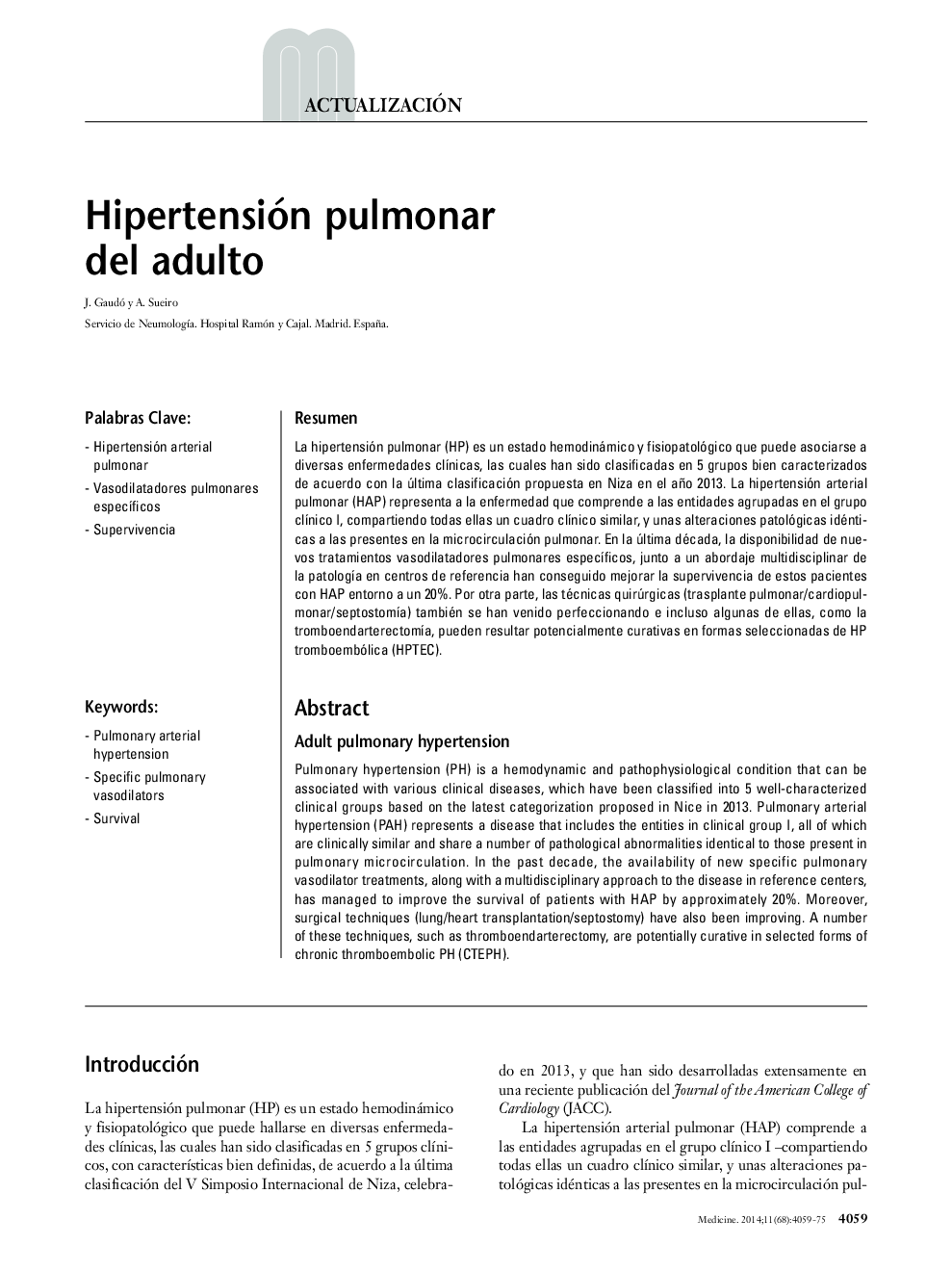| Article ID | Journal | Published Year | Pages | File Type |
|---|---|---|---|---|
| 3806570 | Medicine - Programa de Formación Médica Continuada Acreditado | 2014 | 17 Pages |
Abstract
Pulmonary hypertension (PH) is a hemodynamic and pathophysiological condition that can be associated with various clinical diseases, which have been classified into 5 well-characterized clinical groups based on the latest categorization proposed in Nice in 2013. Pulmonary arterial hypertension (PAH) represents a disease that includes the entities in clinical group I, all of which are clinically similar and share a number of pathological abnormalities identical to those present in pulmonary microcirculation. In the past decade, the availability of new specific pulmonary vasodilator treatments, along with a multidisciplinary approach to the disease in reference centers, has managed to improve the survival of patients with HAP by approximately 20%. Moreover, surgical techniques (lung/heart transplantation/septostomy) have also been improving. A number of these techniques, such as thromboendarterectomy, are potentially curative in selected forms of chronic thromboembolic PH (CTEPH).
Related Topics
Health Sciences
Medicine and Dentistry
Medicine and Dentistry (General)
Authors
J. Gaudó, A. Sueiro,
